32 surprising facts about Scottish Fold cats
These facts about Scottish Fold cats will help you decide if this gentle little sweetheart is the right feline for your family.
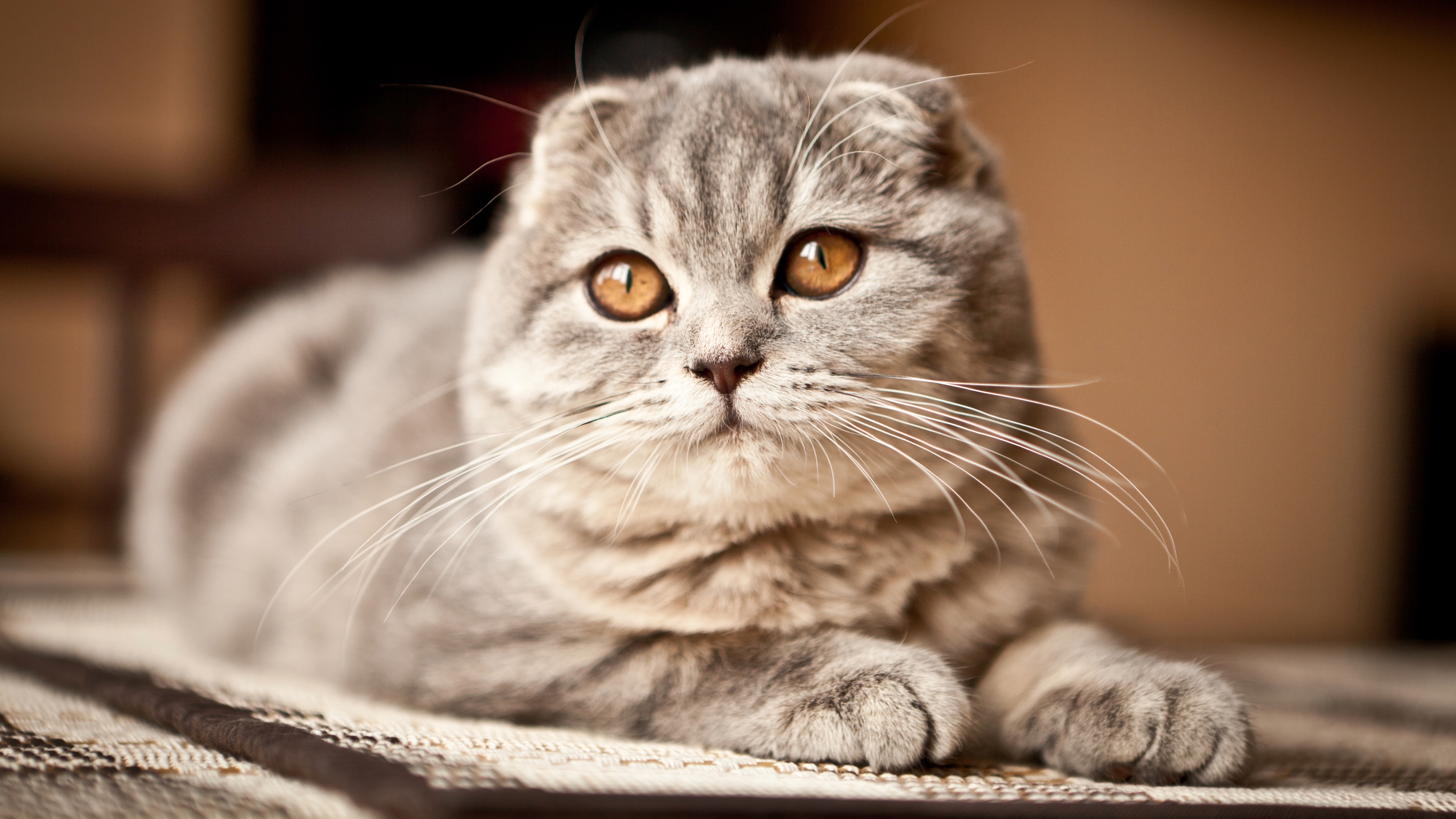
Looking for facts about Scottish Fold cats? You're in the right place! Whether you've just welcomed one of these easygoing cats into your family, are considering adopting one, or simply can't get enough of their adorable faces, we've got you covered.
Scottish Folds are the perfect blend of chilled meets active. While they love a daily play session or two with the best cat toys, they're equally happy to curl up quietly beside you or perch at the top of their cat tree watching the world go by.
However, while there are always things to consider when you get a kitten, you'll want to give extra thought to adopting a Scottish Fold. That's because they do suffer from a genetic disorder known as osteochondrodysplasia, which is what gives many cats their forward-folding ears and it can also cause painful stiffness in their joints.
To help you decide whether this little sweetheart is the right fit for you and your family, we've rounded up everything you need to know about the Scottish fold so that you can make an informed decision. Let's dive in...
Facts about Scottish Folds
1. They're born with straight ears
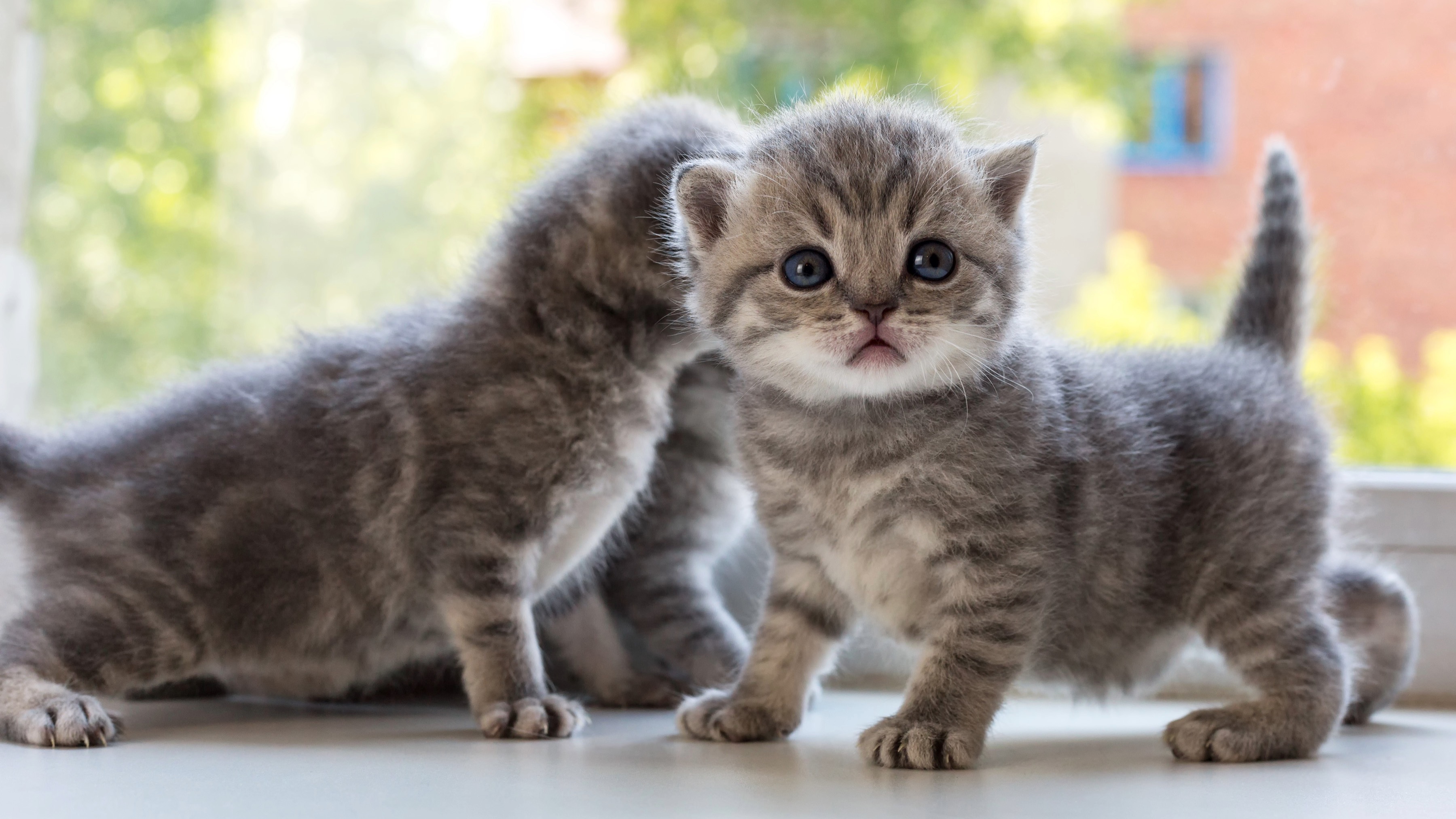
For some reason, we'd just assumed that Scottish fold kittens were born with their ears already folded forward, but it turns out, they all start off with straight ears! At around three to four weeks of age, the straight ears of some kittens may start to flop over, giving those felines the folded ears this breed is known for.
2. The fold is due to a mutation
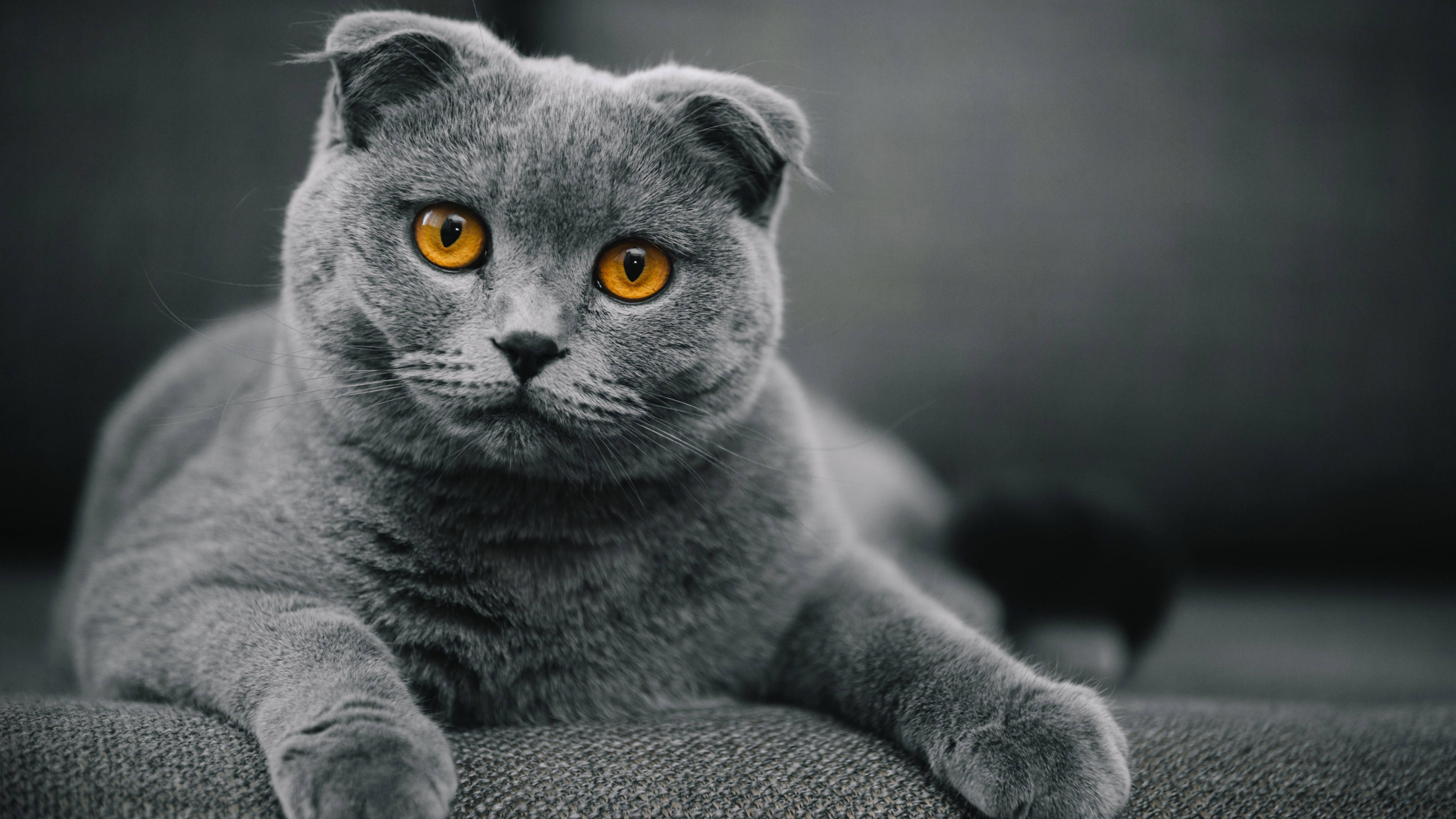
The Scottish fold has a genetic disorder known as osteochondrodysplasia, a general term used to describe disorders that affect the development of bone and cartilage. The most obvious manifestation of this with the Scottish fold is their forward-folding ears, but the breed also suffers to varying degrees from degenerative joint disease in general. This can result in the fusing of the tail, ankles, and knees, and is why most Scottish fold cats are only lightly to moderately active.
3. Scottish folds are still quite a rare breed
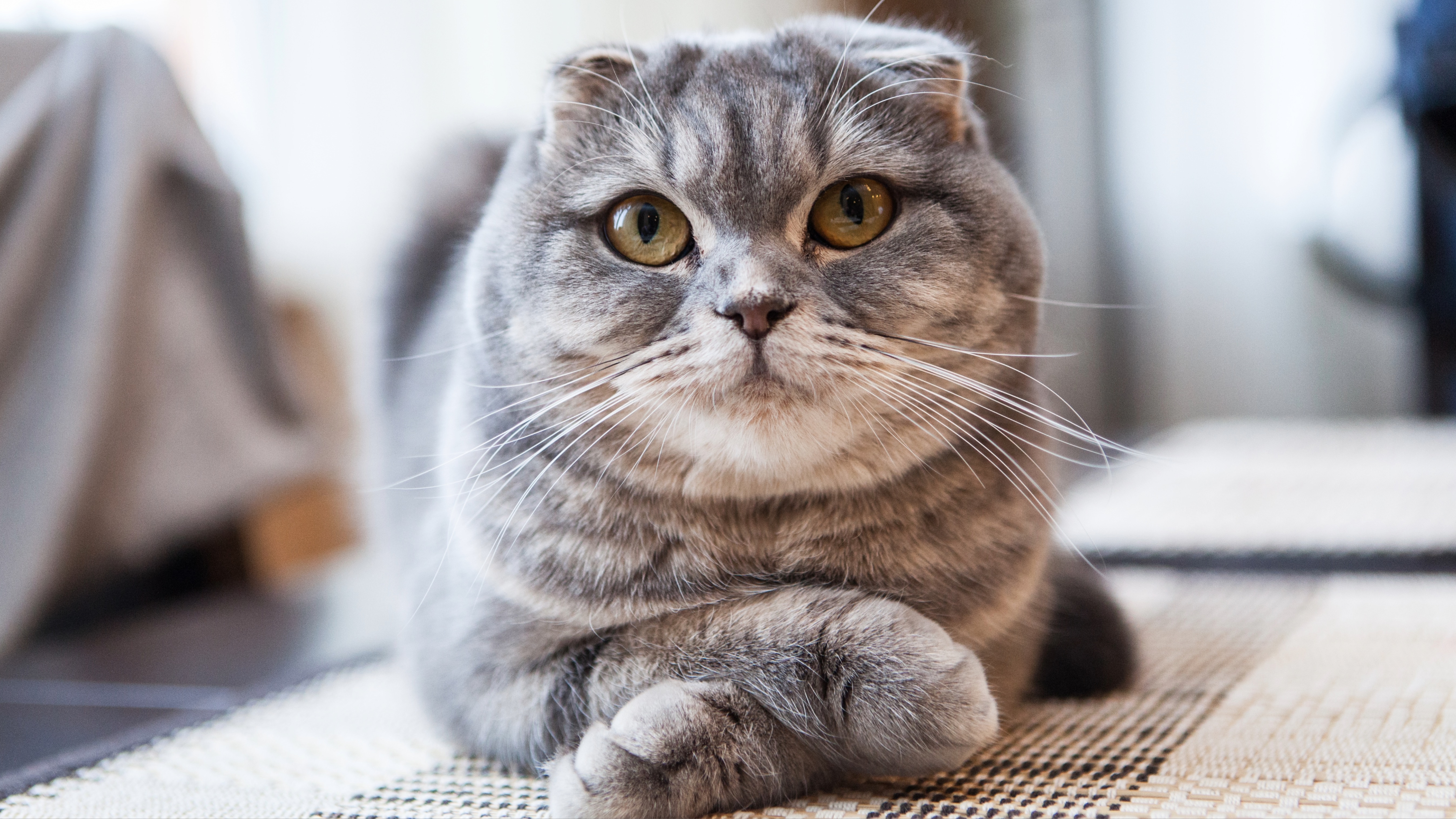
Responsible breeders only ever breed Scottish fold cats with straight-eared cats, which means not all kittens in a litter will have folded ears. Because of this, this breed remains both rare and expensive.
Get the best advice, tips and top tech for your beloved Pets
4. They're known for their hilarious poses

There are so many funny things cats do that make us love them all the more, but one of the funniest has got to be the way the Scottish fold chooses to sit. This breed loves to chill in an upright position that almost resembles the way we humans would choose to sit in an armchair!
Lovingly dubbed the 'Buddha sit' because of how chunky they look while adopting it, Scottish fold cats are also known to sit up like a prairie dog when they want to see what's going on around them.
5. They're a low maintenance breed
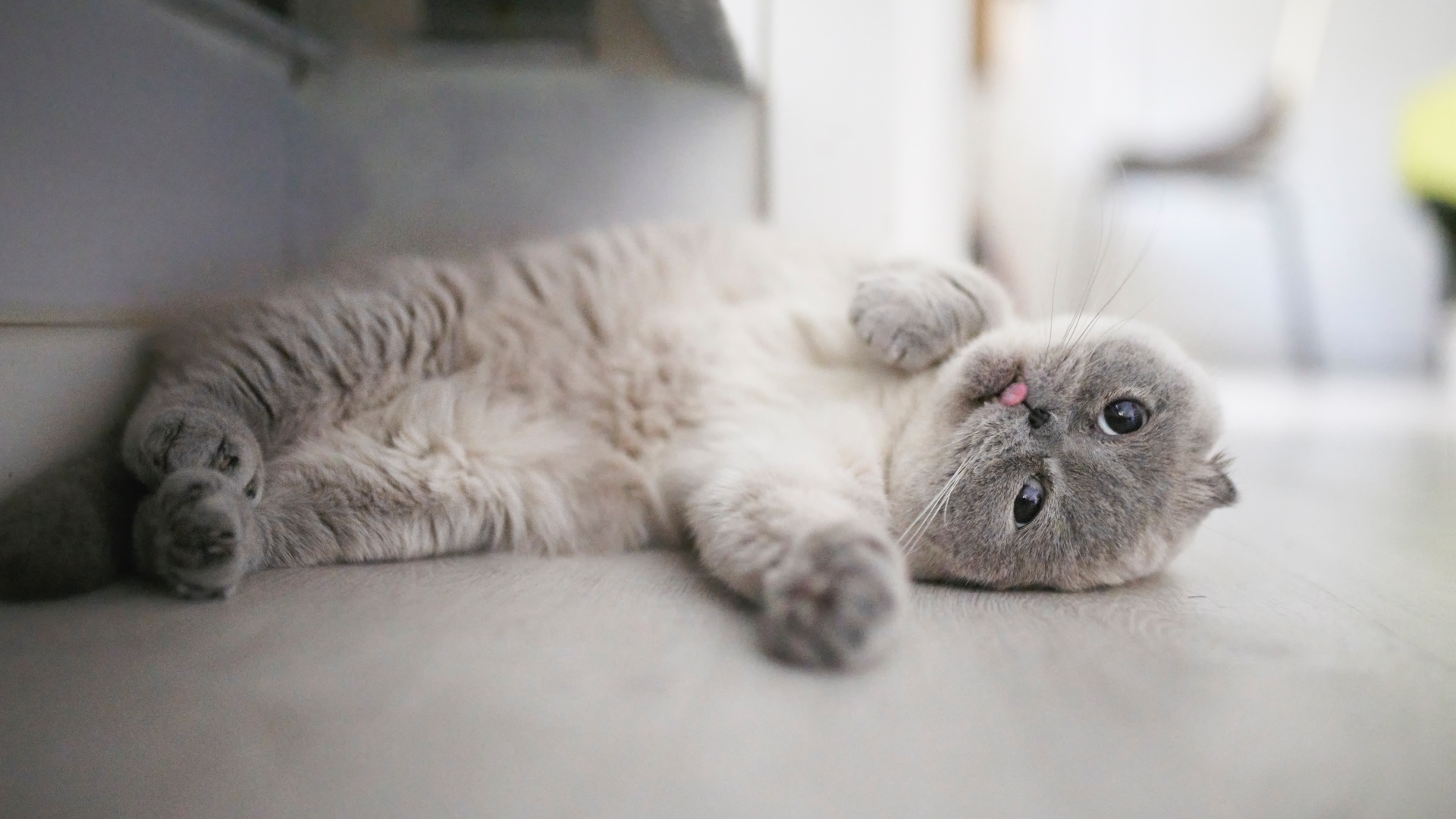
If you've been researching low energy cat breeds, you'll definitely want to add the Scottish fold to your shortlist of feline friends to welcome into your family because this is one seriously chilled kitty. Very easygoing, the Scottish fold is also low-maintenance from a grooming perspective, requiring just one good brush a week to keep their fur in tip-top condition.
6. Scottish folds adore people

When it comes to the lap cat breeds, the Scottish Fold is right up there. This loving little kitty is a real people cat and thrives on a good balance of casual play with their owners and quiet snuggle time. Social cats who enjoy human companionship, if you're looking for a devoted companion, this breed is well worth considering.
7. They love to play
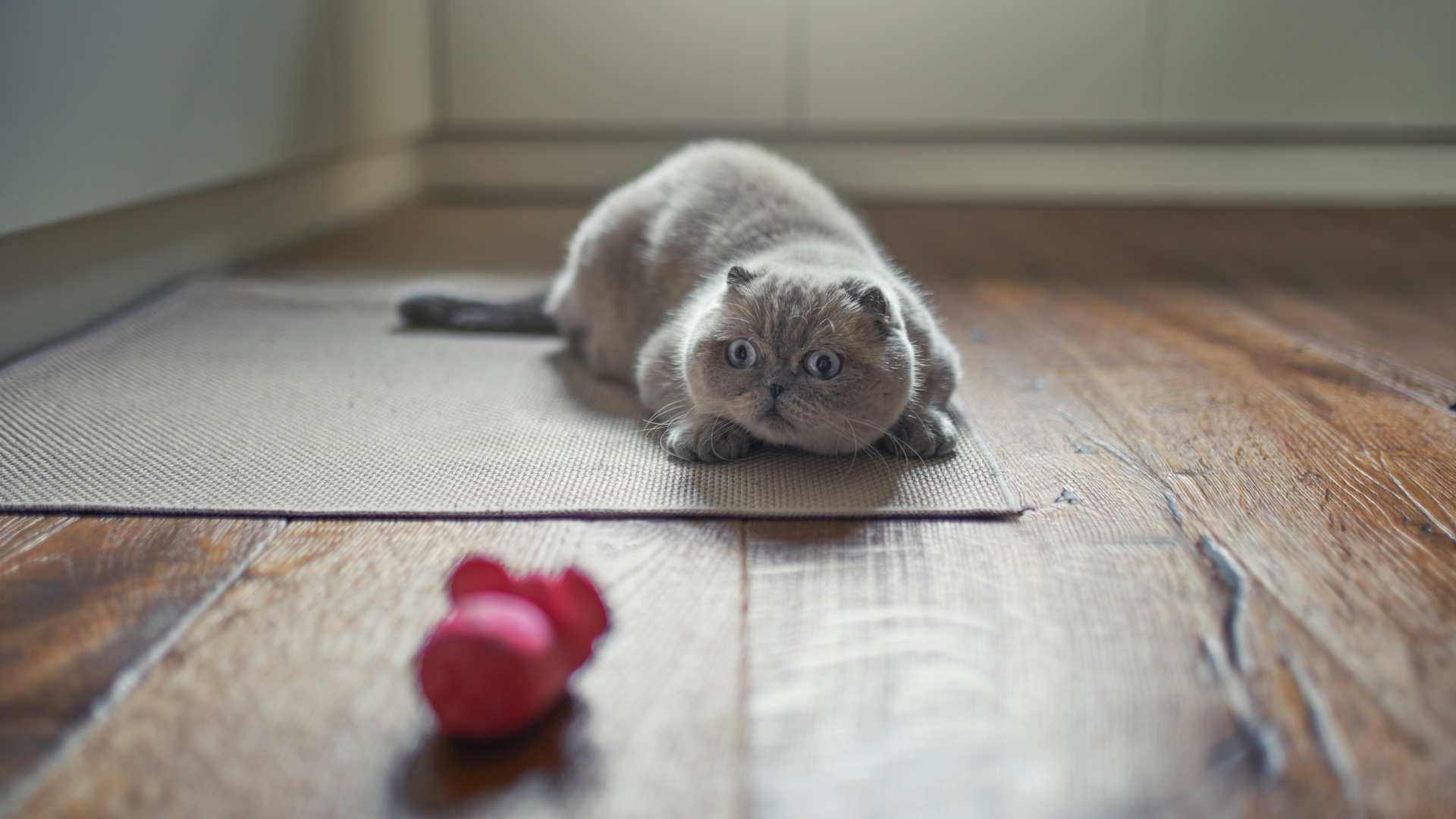
One of the great things about the Scottish fold is that while they enjoy a moderate amount of play and exercise, they're not the kind of breed that requires a ton of physical stimulation to stay happy and healthy. A few short sessions with the best interactive cat toys each day is more than enough to meet their needs — and they'll be quite content to play independently too, which is brilliant if you have other things you need to do.
8. They're very easygoing
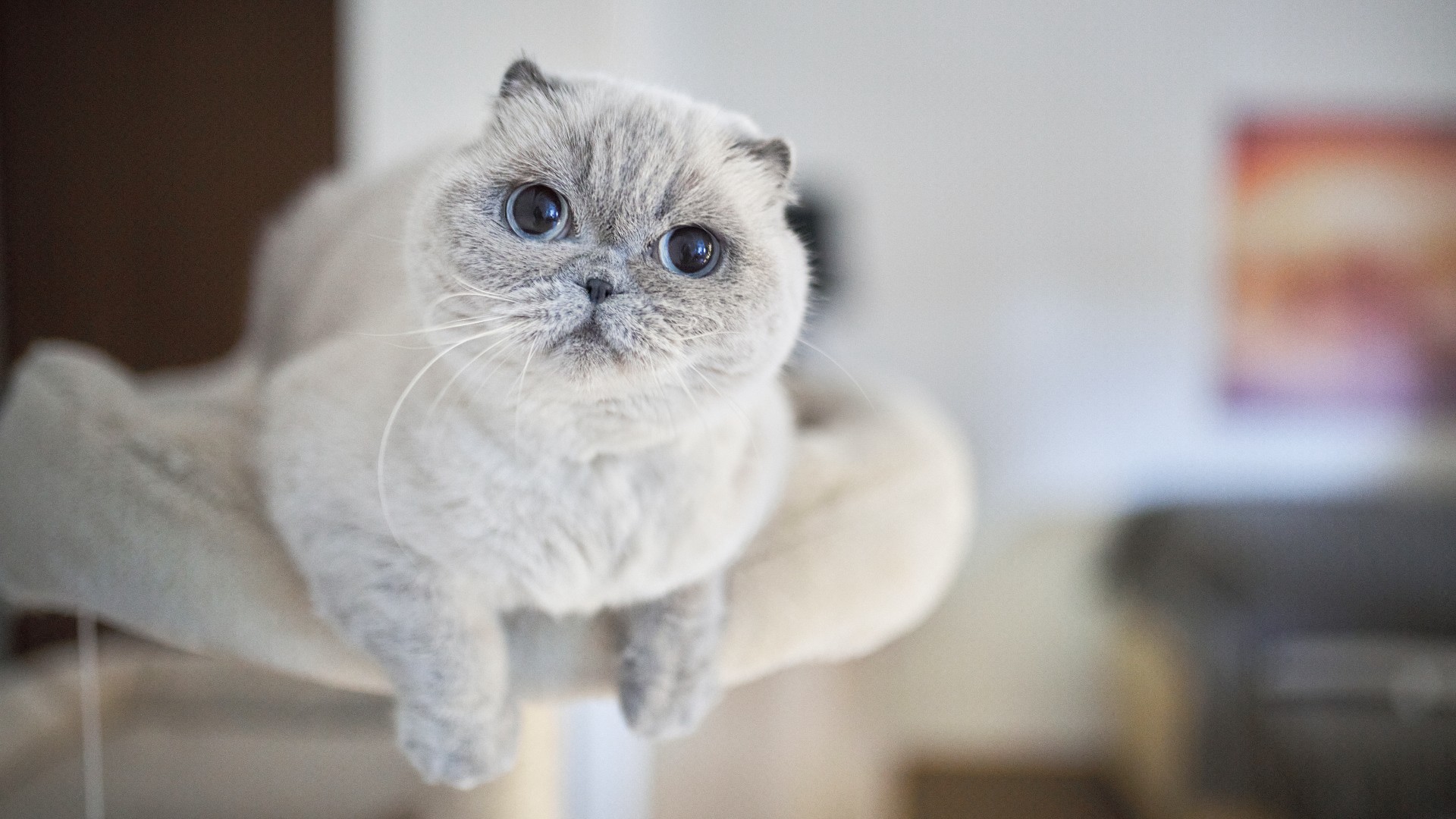
One of the most easygoing cat breeds around, the Scottish fold is not one to make a fuss or demand your attention. Yes, they love being with their people, but they're also independent enough to amuse themselves and unlike some other breeds, they have a good grasp on the concept of personal space!
9. Scottish folds are highly intelligent
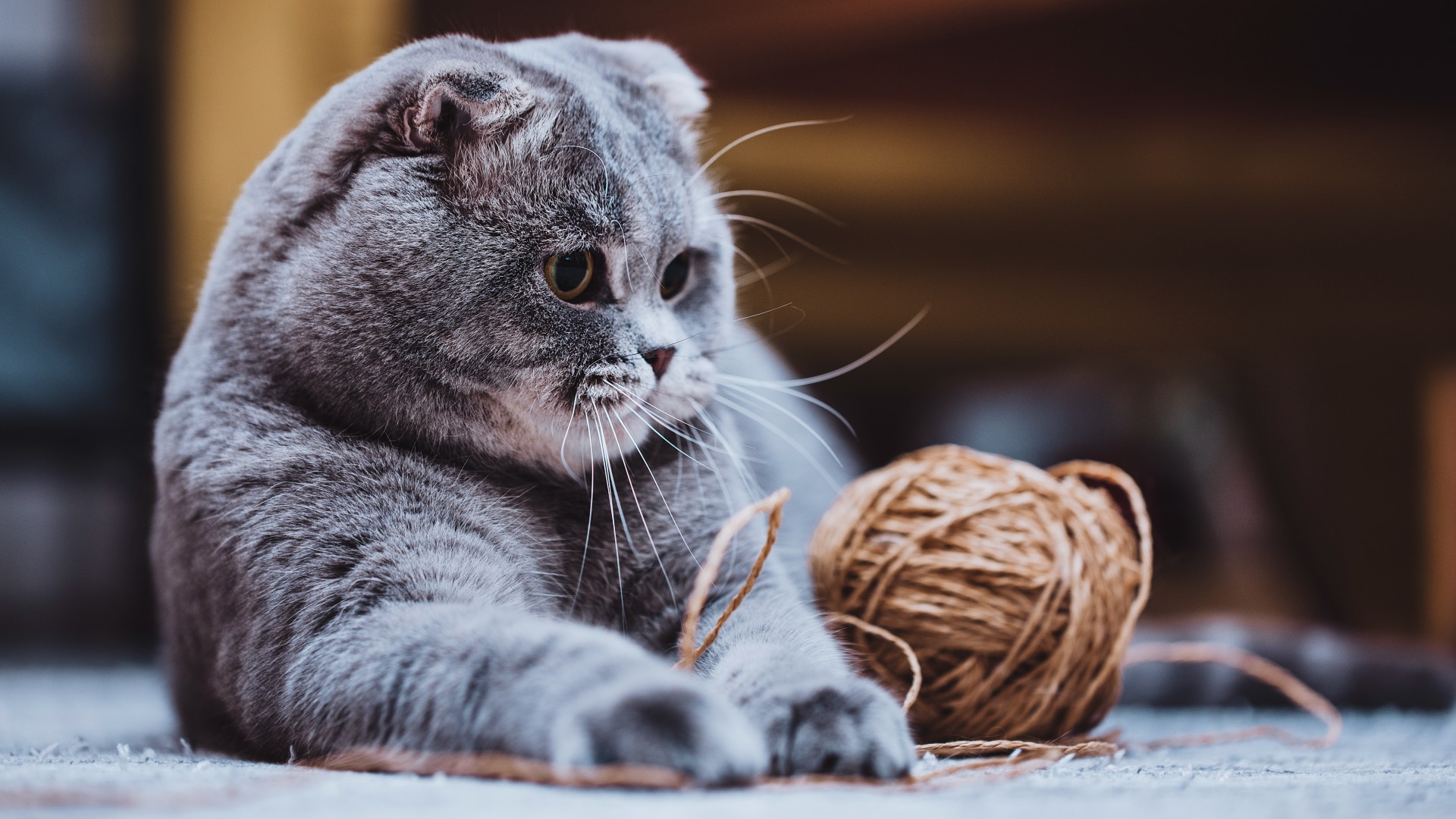
Scottish fold cats are very intelligent and that, coupled with their curious nature, means that investing in the best cat puzzle feeder is sure to win you some serious brownie points!
10. Not all of them will have folded ears
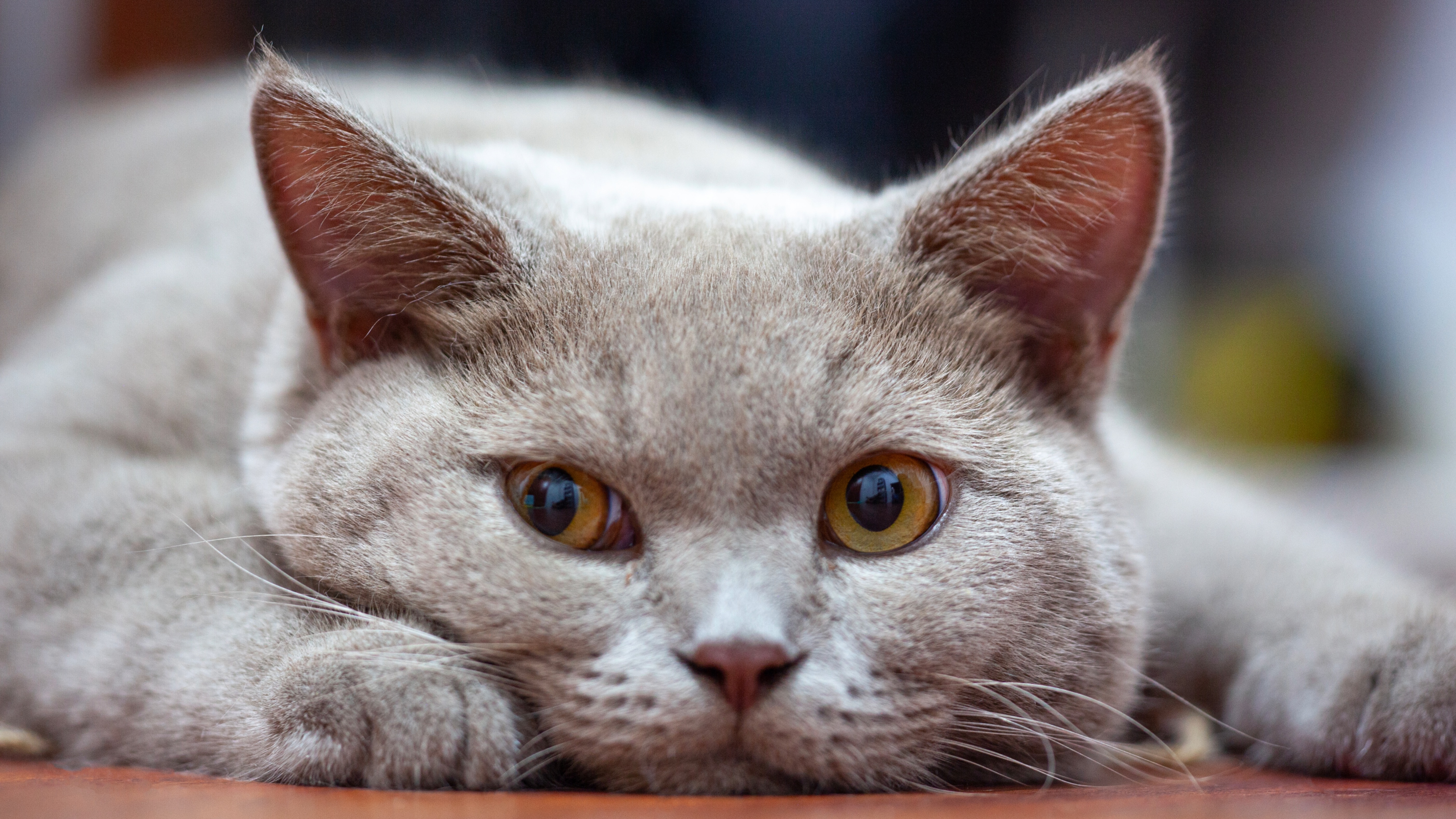
Scottish fold cats must be loved for all of their amazing qualities and not just their folded ears because some kittens in a litter won't develop the breed's signature forward-fold. While many Scottish fold cats will be born with the gene mutation that produces the fold, some will be born without this and have straight ears throughout their lives.
11. It all started with a barn cat named Susie
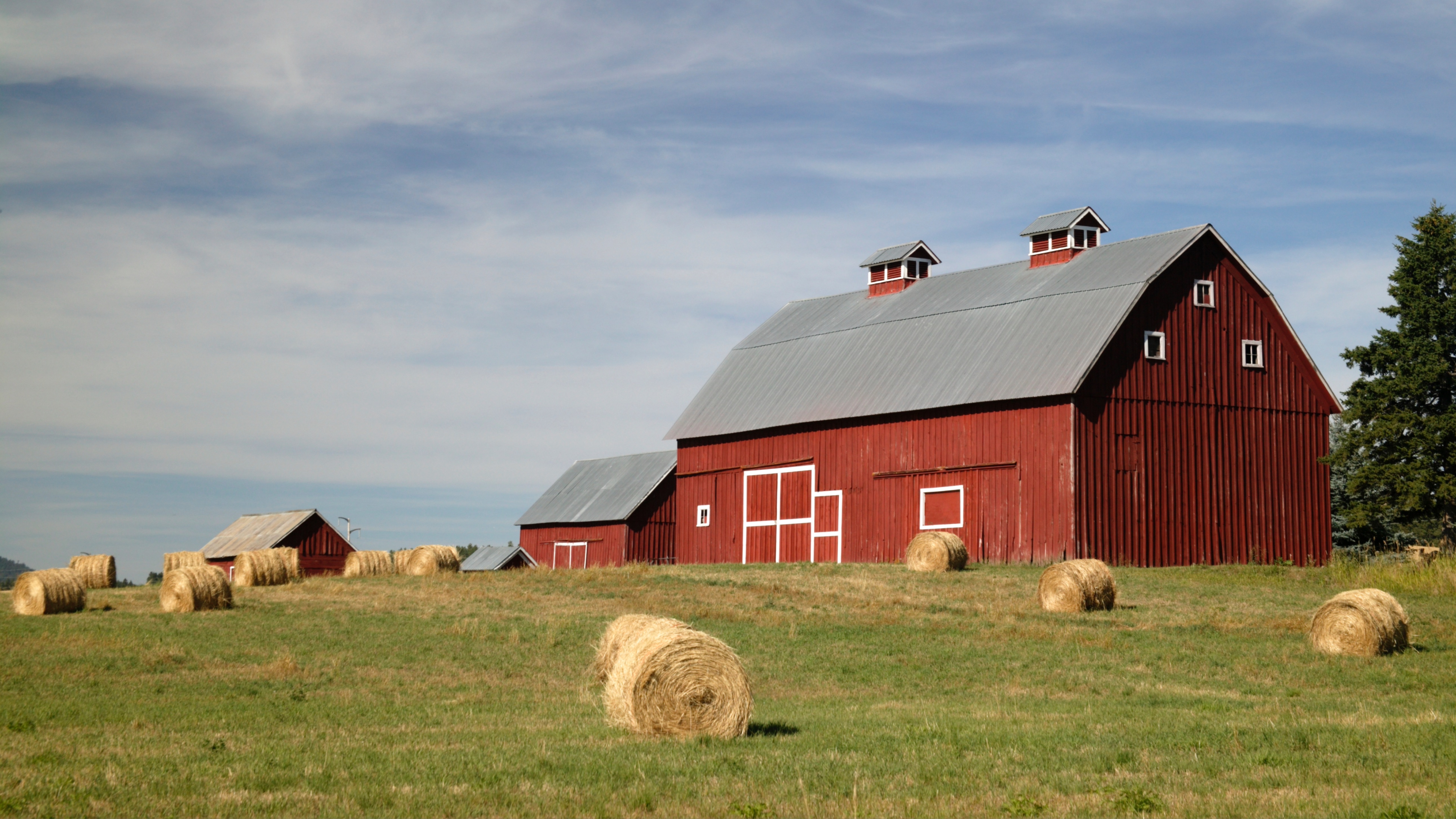
When it comes to the history of the Scottish fold, the breed is believed to have descended from a white barn cat named Susie who happened to have flat ears. She gave birth to a litter of kittens who all went on to develop forward-folded ears, which was noted by a neighboring farmer and cat enthusiast who with the help of a geneticist decided to start breeding what is now known as the Scottish fold.
12. Scottish folds are never bred together

Scottish fold cats are never bred together due to ethical concerns. That's because their mutation means the offspring of a Scottish fold breeding duo could have serious degenerative issues. For that reason, they're typically bred with either American shorthairs or British Shorthairs.
13. Not all folds are the same
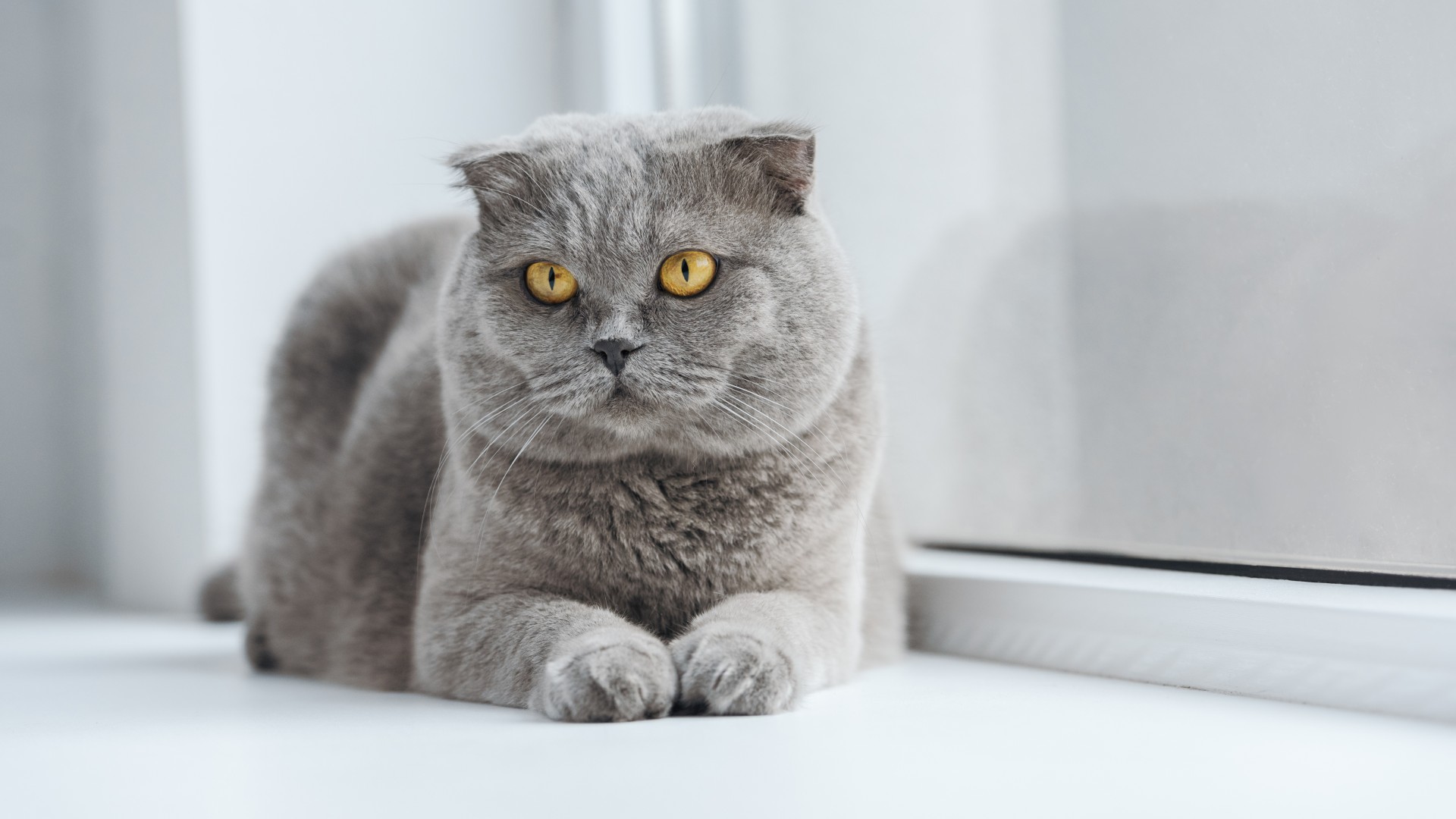
It turns out that not all folded ears are created equal. A Scottish fold can be born with one of three types of fold — single, double, or triple. A single fold is a very slight fold that involves just the tip of the ear. A double fold has a more prominent bend than a single fold does with half of the ear bending forward, while a triple fold is where the ear lies forward flat against the head.
14. They require gentle handling
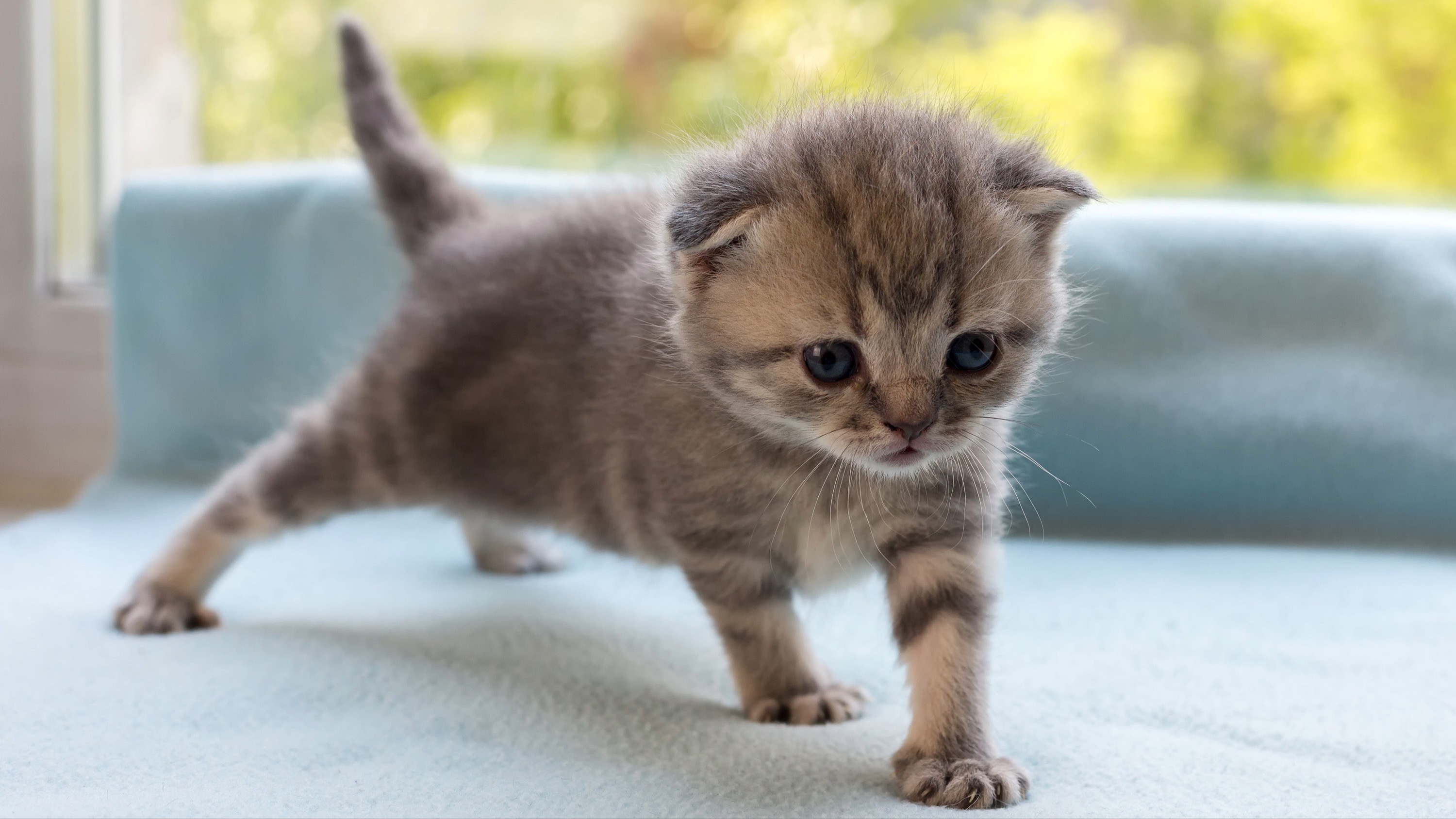
While they're not physically delicate cats (they have a robust build) they do require very gentle handling, especially when it comes to their tail which can be quite stiff. It's important if you have young children in the family to make them aware that Scottish folds can suffer pain if engaged with roughly.
15. Celebrities love them
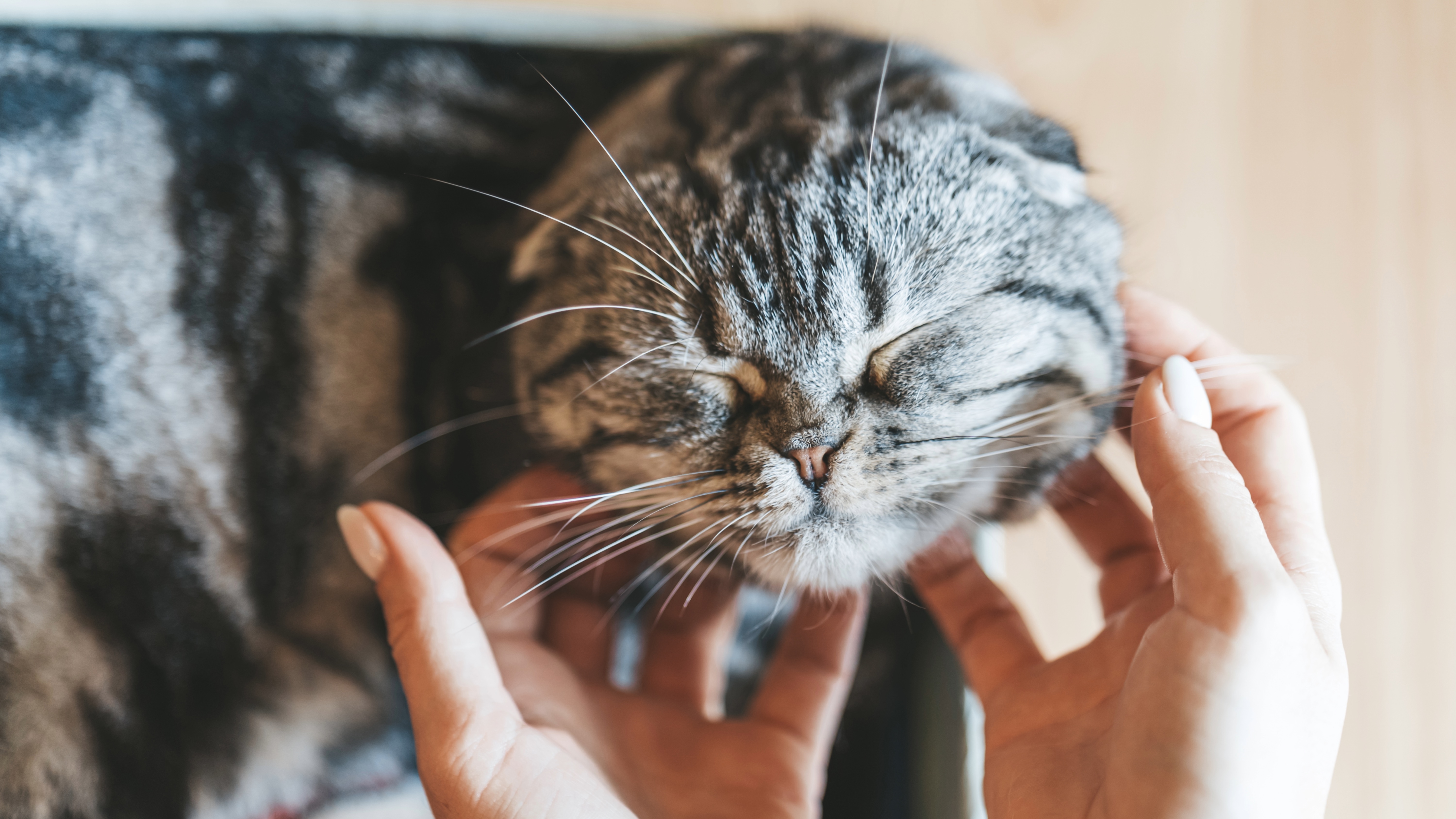
Scottish folds are a hugely popular breed with celebrities. Taylor Swift has two of these little cuties (named Meredith Grey and Olivia Benson), while singer Ed Sheeran is the proud dad of a Scottish fold named Calippo (after his favorite ice cream!)
16. They're moderately active

While not an overly active breed, the Scottish fold still needs a moderate amount of physical and mental stimulation each day to ensure they stay happy and healthy. Things like the best automated cat toys that they can engage with, cat trees they can scratch and climb, and puzzle toys that can give their brains a good workout will all be appreciated by this breed.
17. Scottish folds are easy to train

There are so many reasons to train your cat but things like teaching them to learn the litter box and not to scratch the furniture are typically at the top of the list for most pet parents. Thankfully, because the Scottish fold is quite intelligent, they pick up new behaviors and skills relatively easily, and they also won't mind learning a few tricks if you have the time to teach them.
18. They're a medium-sized breed
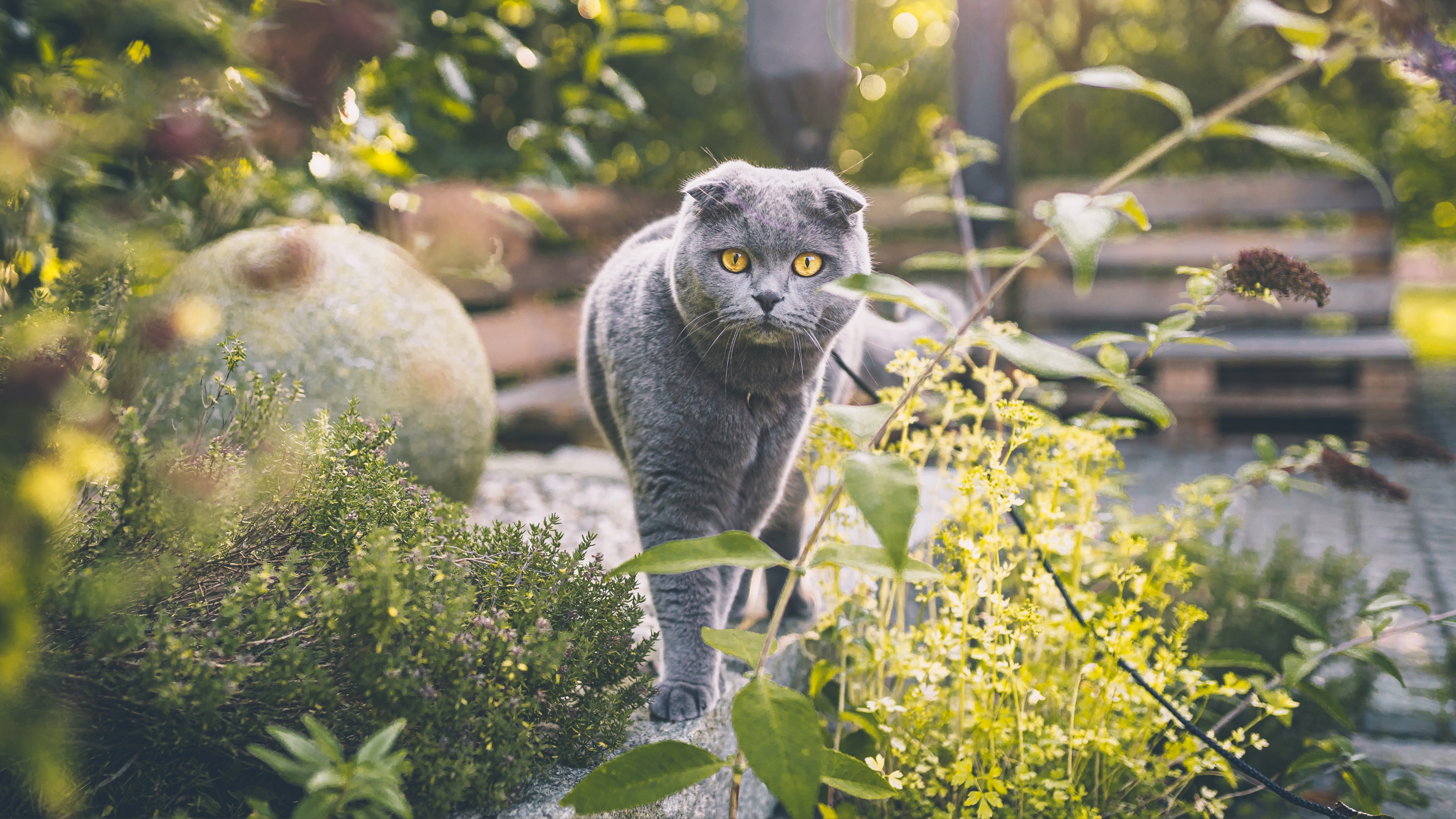
A medium-sized breed with a well-rounded and sturdy build, the Scottish fold is a compact and solid cat that appears to be made entirely from curves! They have adorable looks — the sort you'd expect if the Owl and the Pussycat got together and had a baby — with a large round head and a sweet face that holds equally large round eyes.
19. They make wonderful family pets

If you have young children at home, you probably don't need any more reasons to adopt a cat, but it's worth noting that Scottish folds make outstanding family companions. They love being with their people more than anything else in the world and because they're so calm, gentle, sweet and easygoing, they make wonderful forever friends for children.
20. Obesity can be a problem

Because Scottish folds are only moderately active due to the varying degrees of joint pain they suffer, weight gain can be a problem. Feed your kitty the right portion of the best dry cat food (or a wet food alternative), limit treats, and try to get them engaged in two to three sessions of play each day — aside from being great for their waistline, regular play sessions is one of the best ways to bond with your cat.
21. Scottish folds can be stubborn
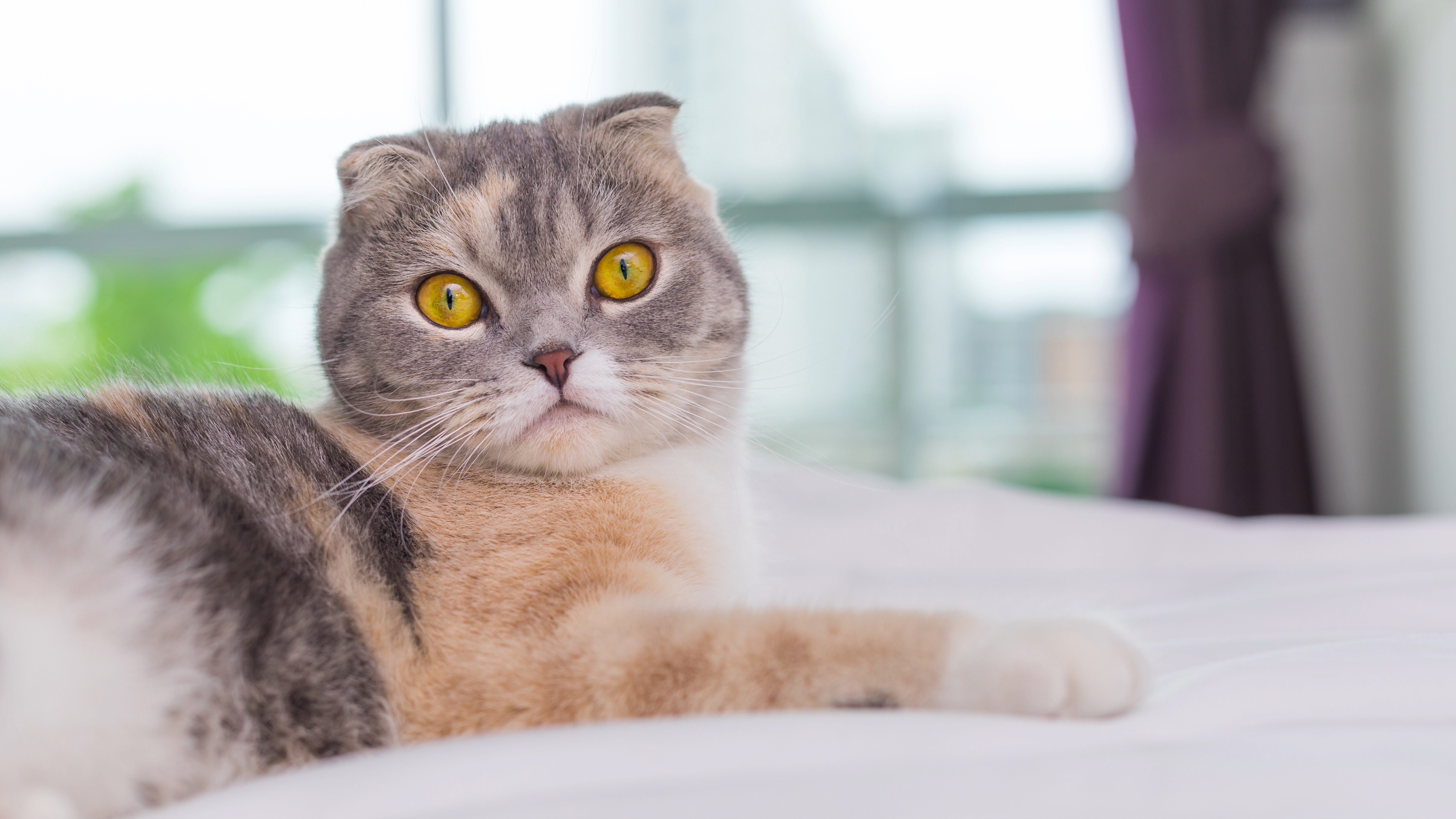
While they're mostly soft, docile, and affectionate little sweethearts, the Scottish fold does have an independent streak that can lend itself to stubbornness on occasion. However, on the whole, they respond very well to a patient approach with lots of positive reinforcement.
22. Many suffer from osteoarthritis
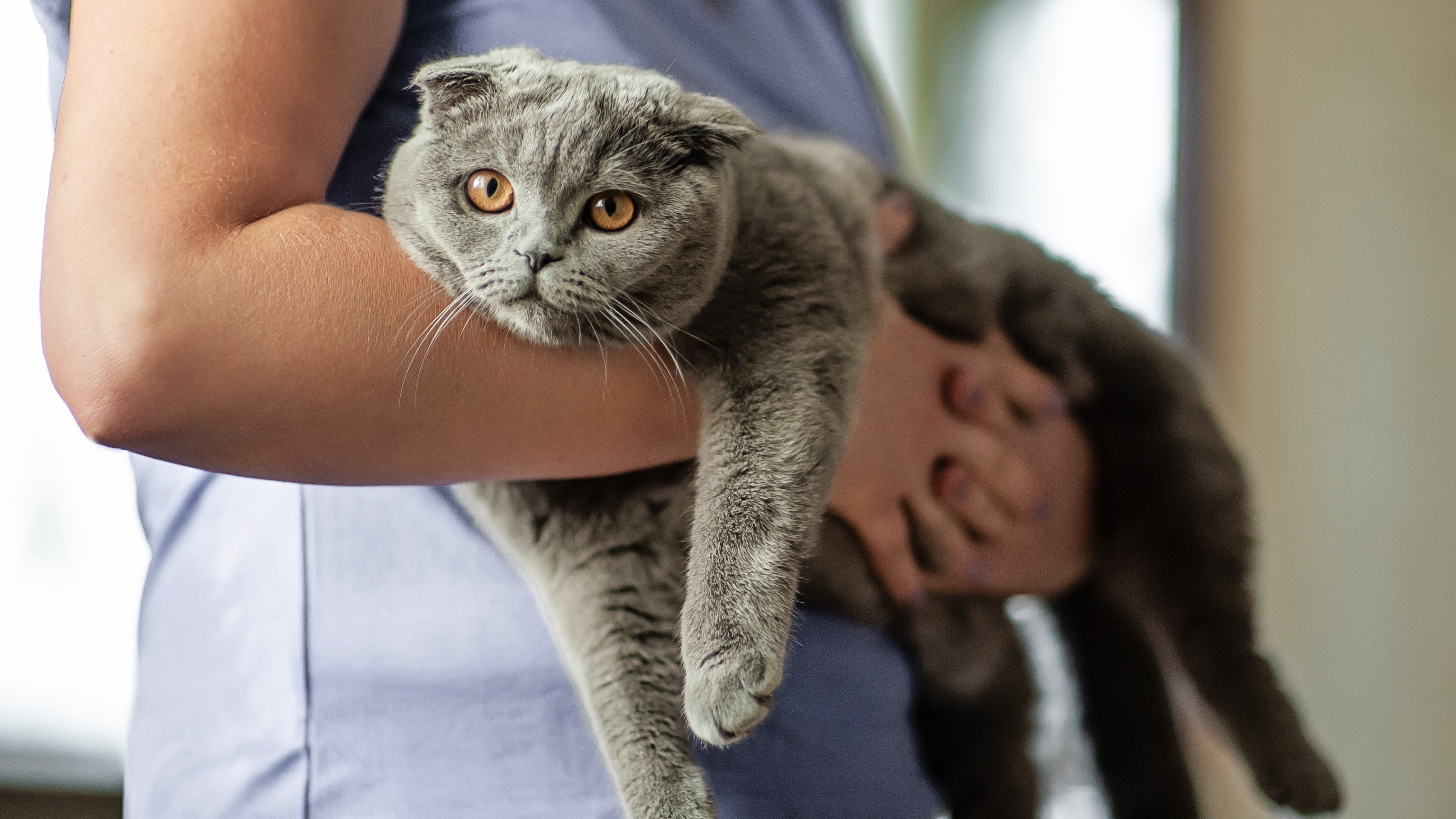
Because they have osteochondrodysplasia (a disorder caused by the mutation that gives them their folded ears and affects the cartilage throughout their body) Scottish folds are very prone to arthritis, a joint disease that can cause them a lot of pain. While arthritis in cats can't be cured, it can be treated with pain relief to help affected felines to feel more comfortable.
23. Scottish folds are not recognized by breed associations
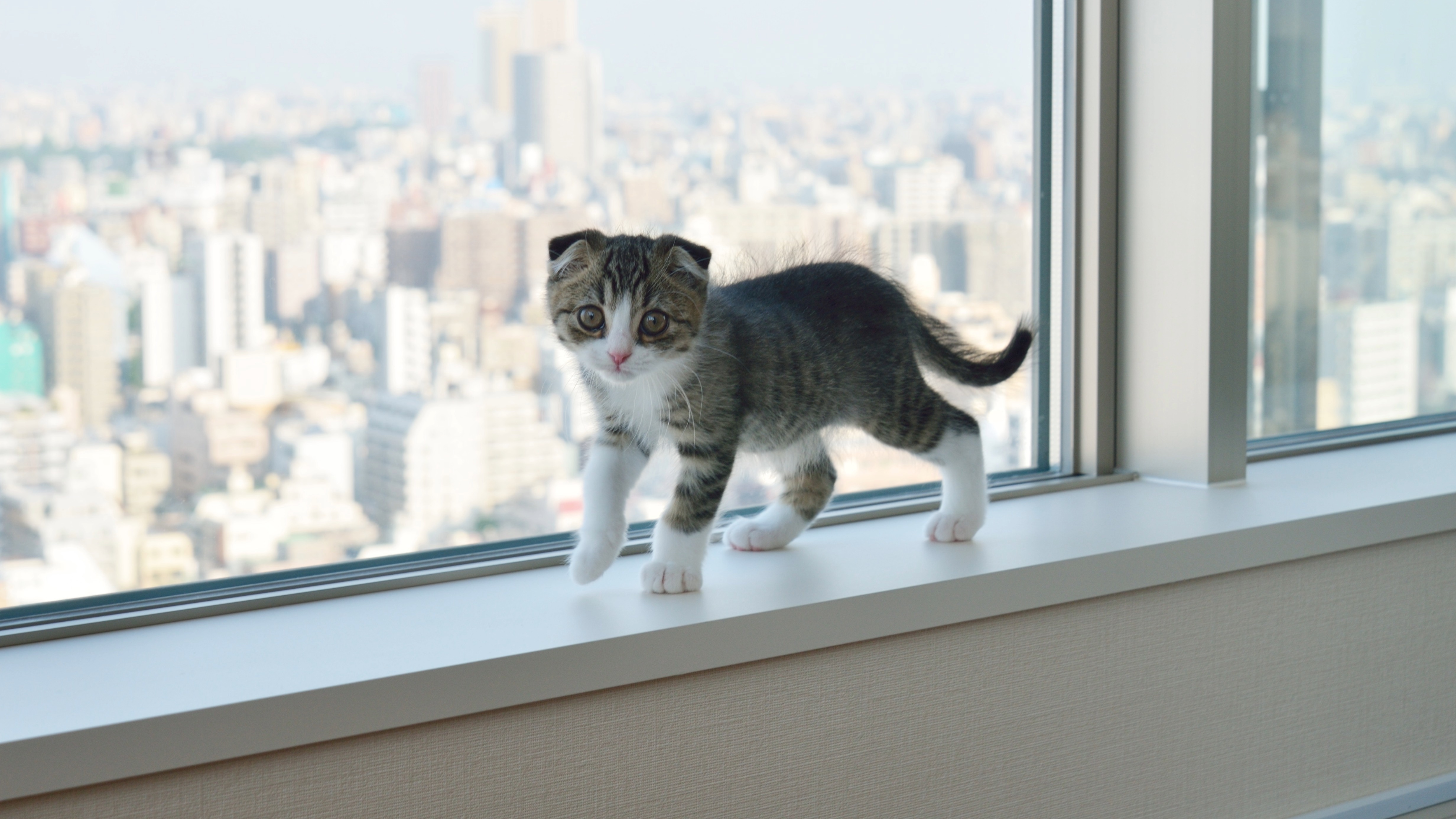
Many countries have banned the breeding of Scottish fold cats due to ethical concerns and some major cat registries still don't recognize the Scottish fold as an official breed.
24. They're an expensive breed
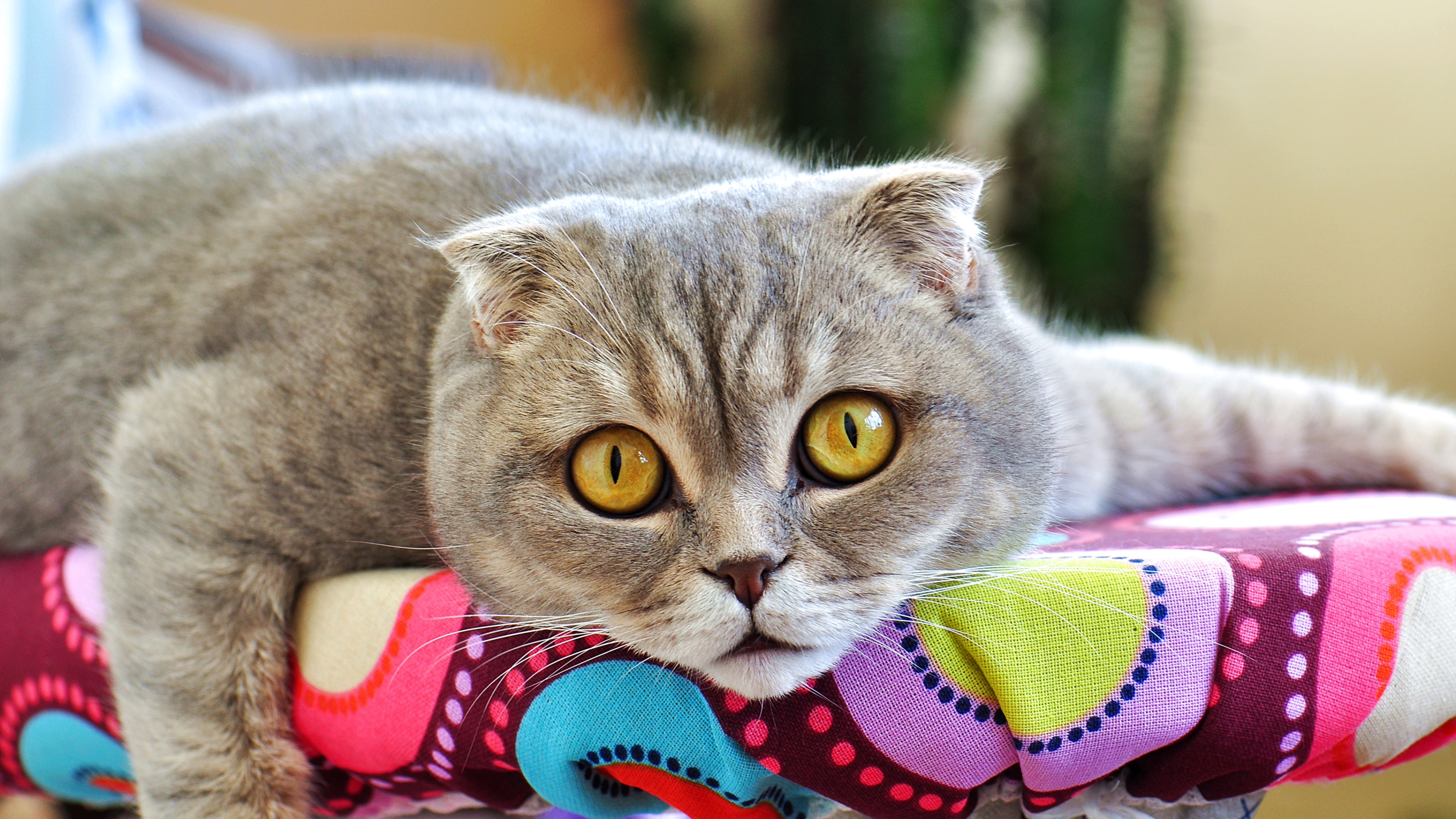
Because they're a rare breed, Scottish folds don't come cheap. If you'd like to welcome one of these laidback cats into your home, expect to pay somewhere in the vicinity of $1,000 - $3,000 if you choose to get them from a reputable breeder.
25. They come in a variety of different colors
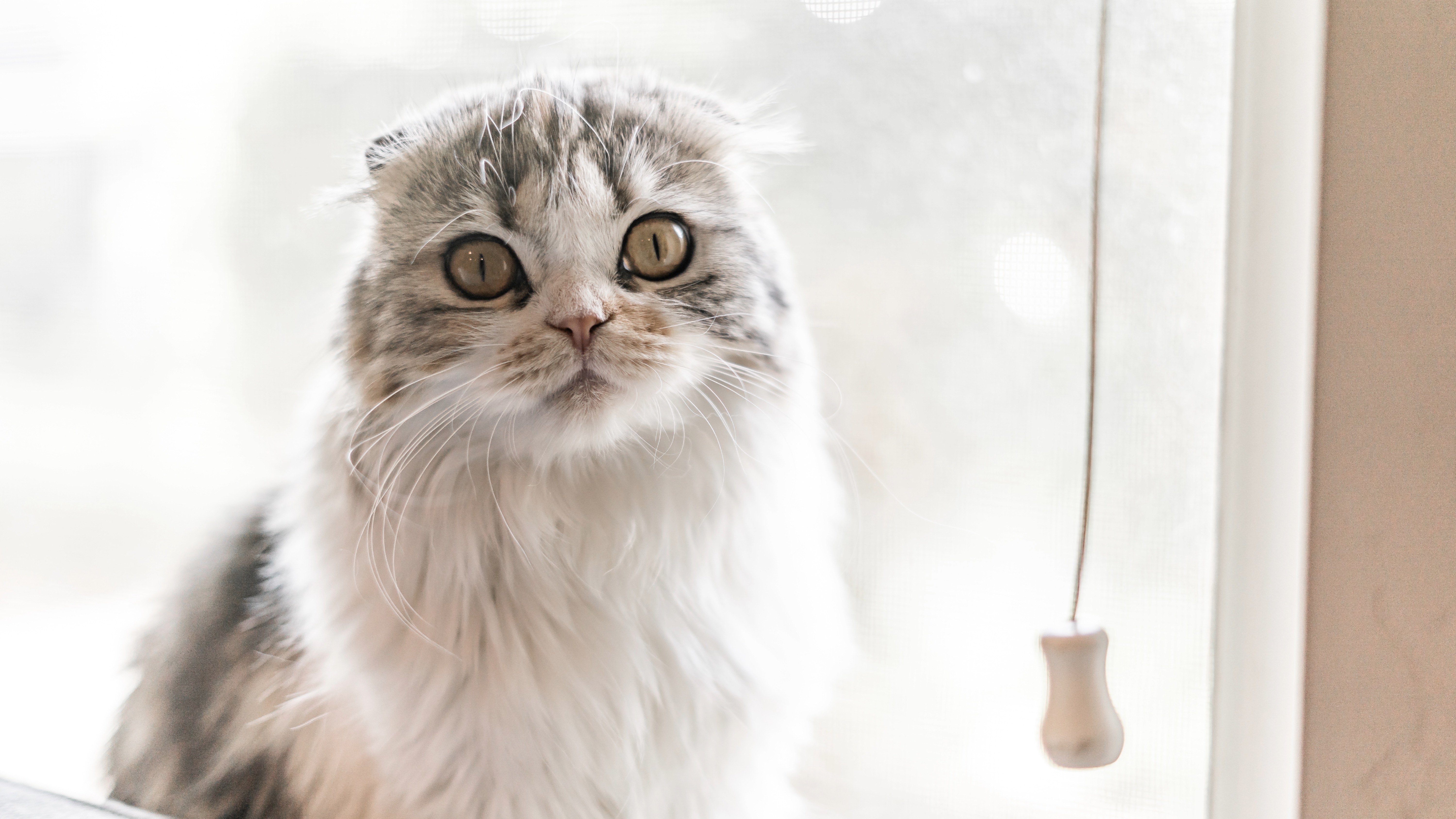
Scottish folds come in a range of beautiful colors including black, blue, grey, white, cream, fawn, lavender, silver, and orange. They also come in both long and short-haired varieties.
26. There are several different coat patterns
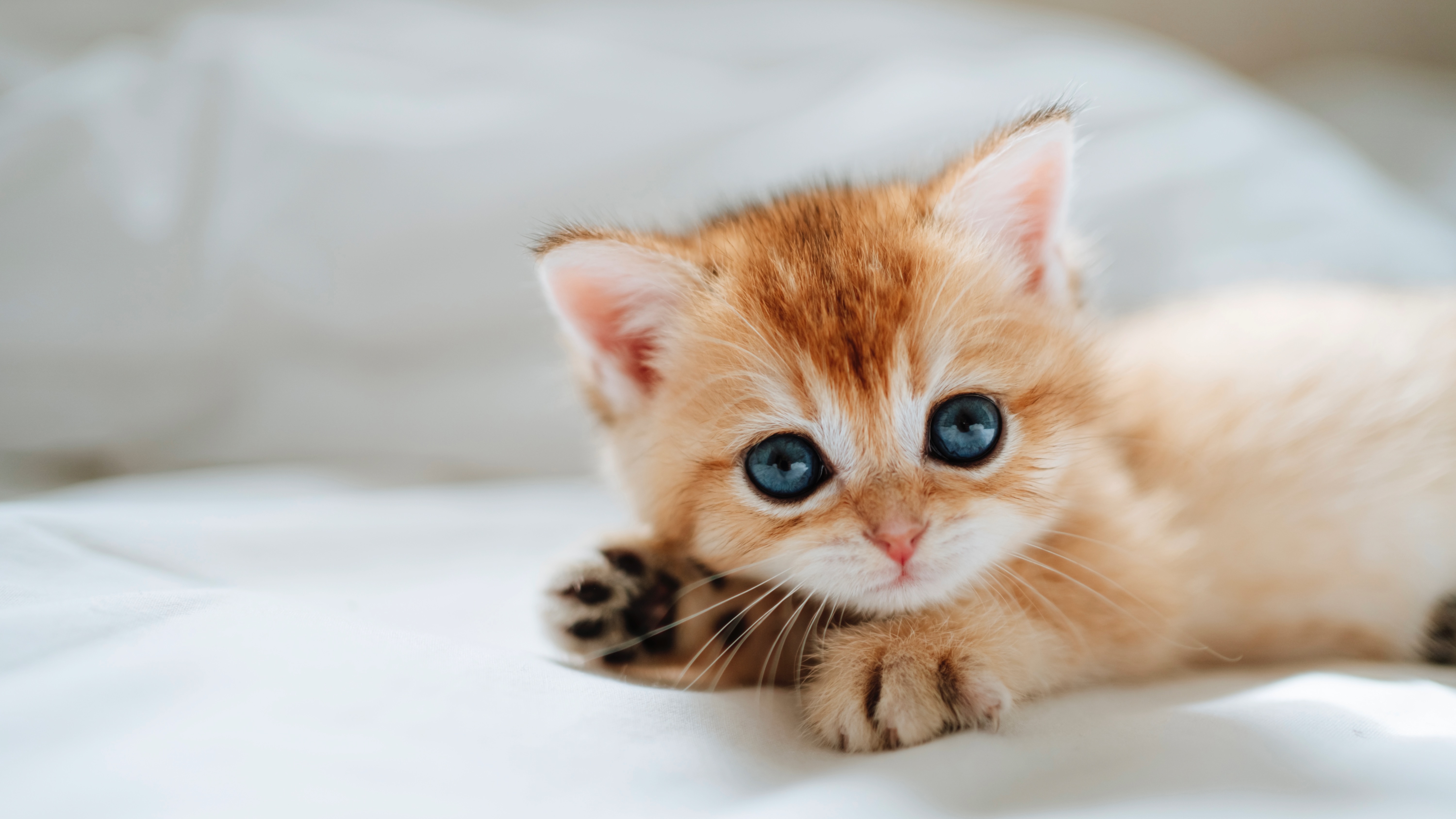
As well as coming in an impressive range of solid colors, the coat of a Scottish fold can also come in several different patterns. The chinchilla golden Scottish fold, for example, has a rich cream undercoat tipped with black. They also sport a rose-colored nose, black paw pads and their eyes are either green or blue-green.
27. Scottish folds are quiet cats
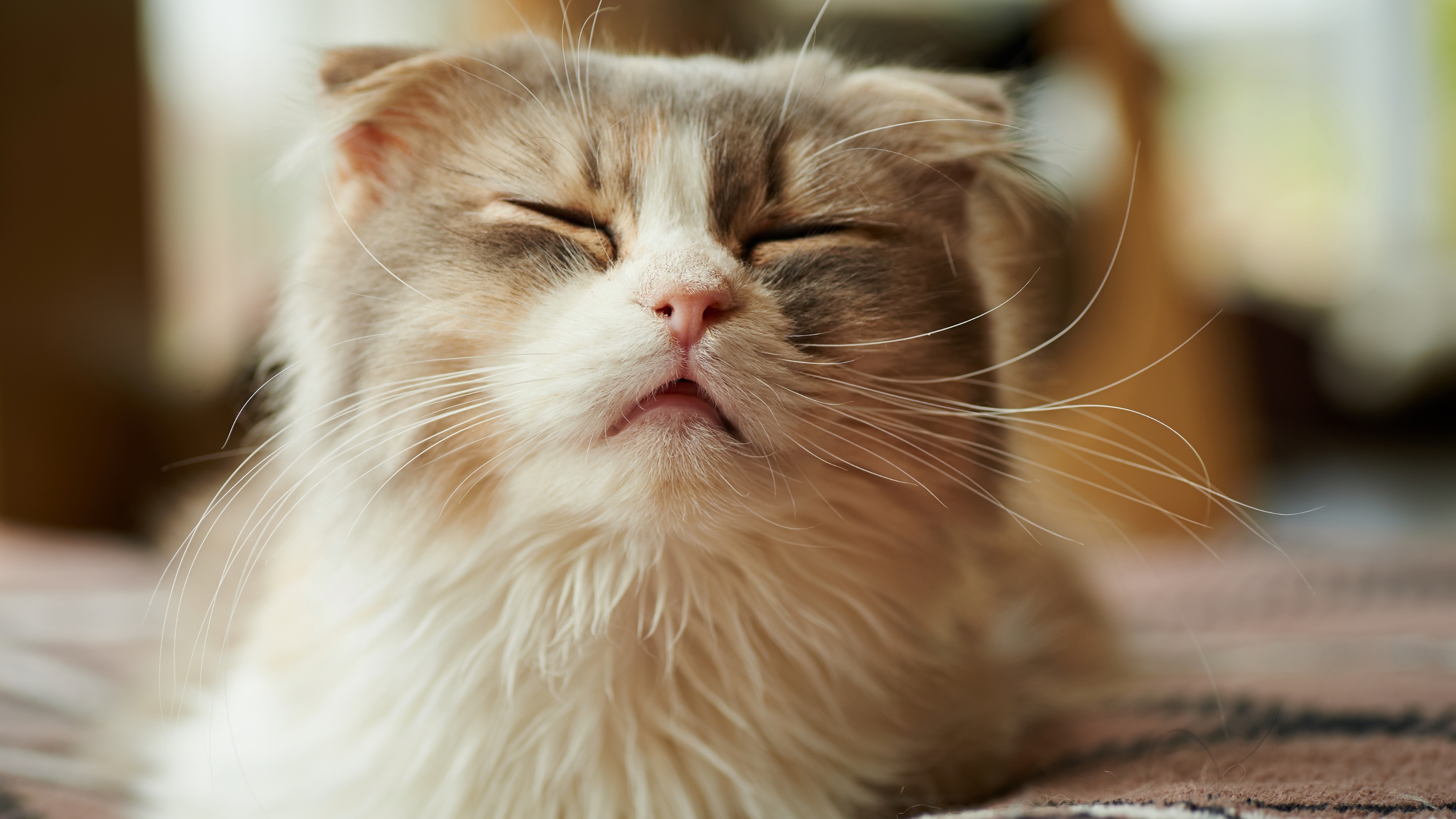
One of the best cats for introverts who enjoy their peace and quiet, the Scottish fold is a softly-spoken kitty who's not one for mindless chatter. They're not particularly vocal cats and tend to only meow when it's absolutely necessary — usually around dinner time when they notice their food bowl hasn't been filled up!
28. Their fur is dense

While you can get long-haired varieties, most Scottish folds sport a short and dense coat that has a rather luxurious look to it. Their thick and plush fur is very easily cared for, requiring just one good brush a week to remove dirt, debris, and dead hair.
29. They're very adaptable
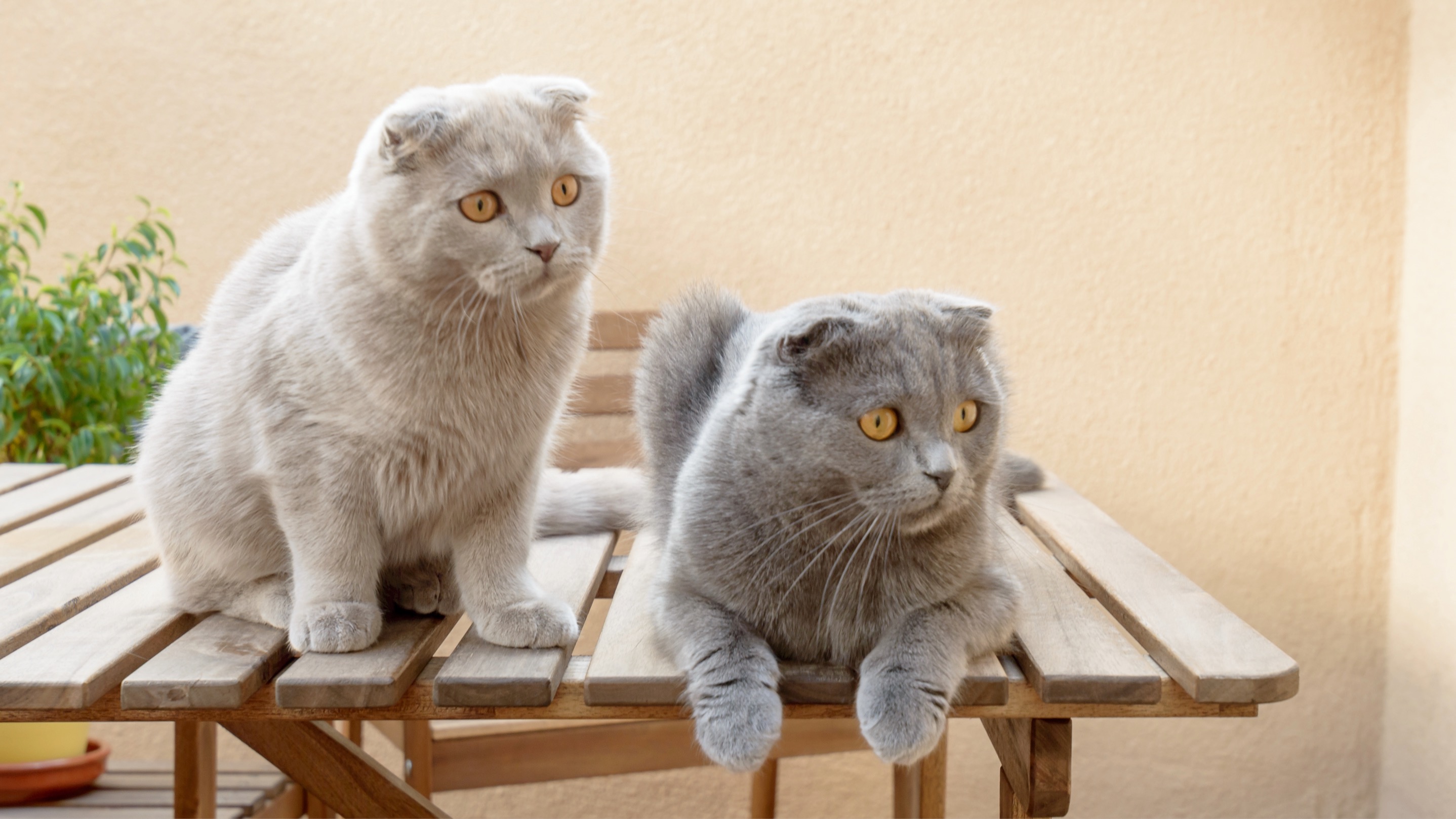
One of the best things about owning a cat is that a Scottish fold is just how adaptable this breed is. Because they're so relaxed and easygoing, Scottish folds do beautifully in just about any living situation, getting on famously with people of all ages and stages and being just as content in quiet environments as they are in ones filled with lots of hustle and bustle.
30. Take care with their tail

Even from a very young age, Scottish fold cats are prone to developing arthritis in their tails. You'll know if your feline friend is in pain if they hold their tail stiffly or pull away from you if you touch their tail or try to pick them up. Avoid holding their tail too firmly and if you notice that they're super sensitive in that area, have them checked over by a vet.
31. Scottish fold cats once had a different name
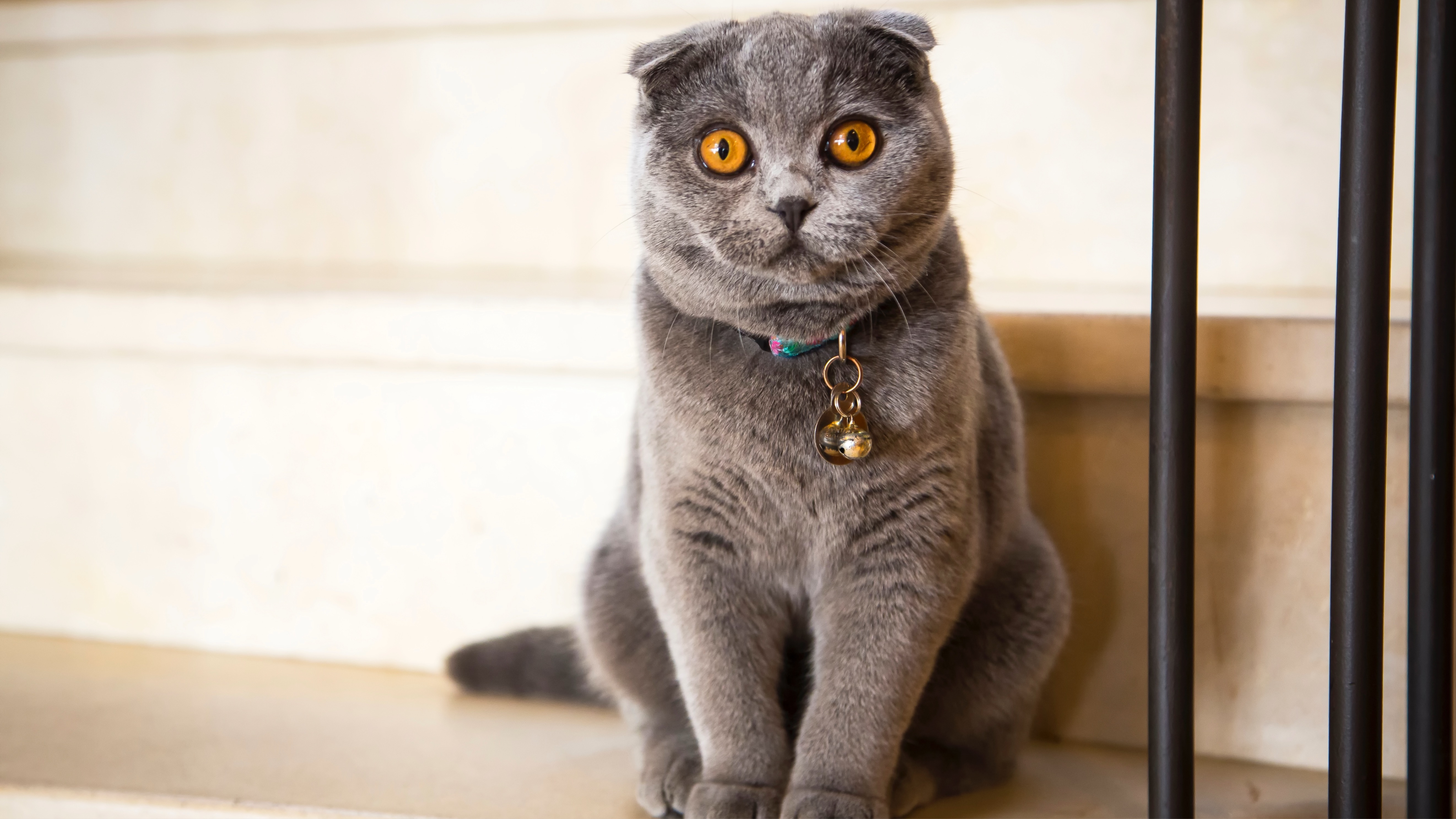
While we know them as Scottish folds, this lovable breed was once called lop-eared cats or lops because people felt they bore some resemblance to lop-eared rabbits. However, the name never took and it was quickly changed in 1966 (just a few years after they came into existence) to Scottish fold.
32. They typically live for around 15 years
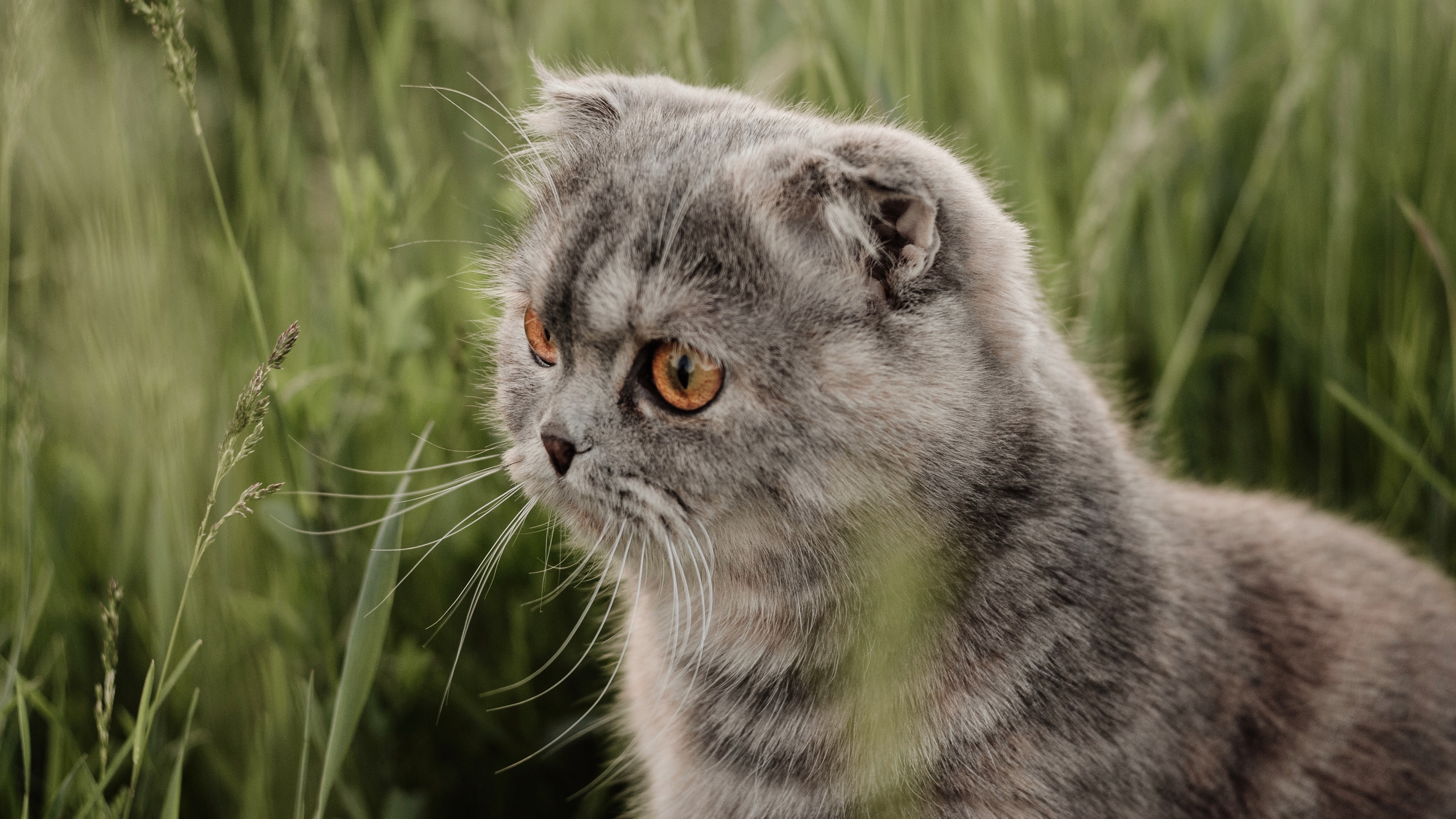
While Scottish folds do have some health concerns, most healthy cats still live for around 15 years, which is the average life expectancy for the majority of our feline friends. Their genetic makeup is the biggest contributing factor in how long they'll live, with some Scottish folds having more severe deformities than others. For cats that are badly affected, life expectancy tends to be significantly shorter.
Love learning new facts to impress your friends and family? Here are some of our favorite interesting cat facts.

Kathryn is a freelance writer who has been a member of the PetsRadar family since it launched in 2020. Highly experienced in her field, she's driven by a desire to provide pet parents with accurate, timely, and informative content that enables them to provide their fur friends with everything they need to thrive.
Kathryn works closely with vets and trainers to ensure all articles offer the most up-to-date information across a range of pet-related fields, from insights into health and behavior issues to tips on products and training.
When she’s not busy crafting the perfect sentence for her features, buying guides and news pieces, she can be found hanging out with her family (which includes one super sassy cat and a kitten), drinking copious amounts of Jasmine tea and reading all the books.
She has written for a range of publications, including Fit&Well, Top Ten Reviews, LiveScience, Goodto, and Product Hunt.
